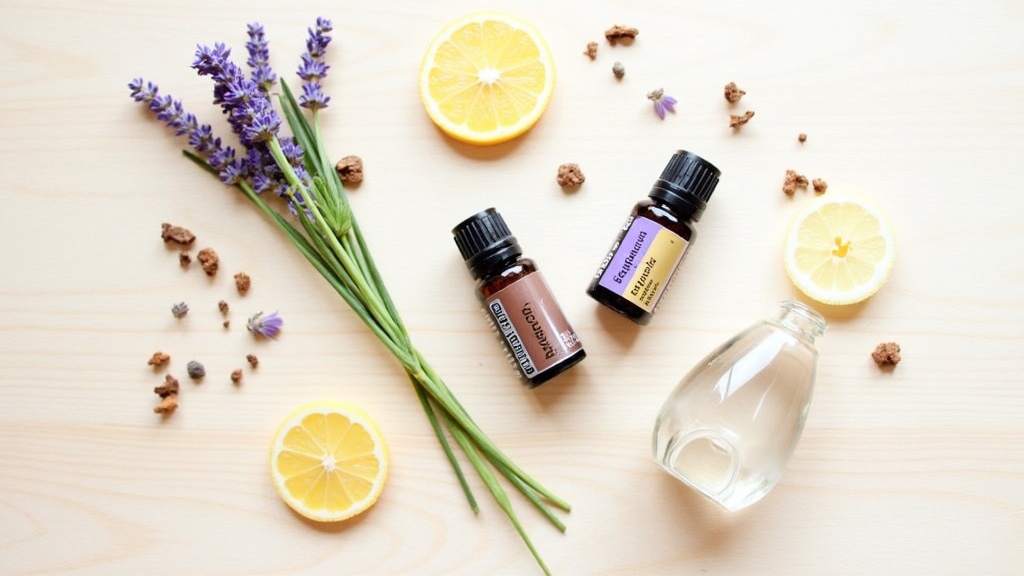Aromatherapy diffuser oils are a simple and enjoyable way to make your home or workspace smell fantastic while giving your mood a boost. Mixing your own blends puts you in control of the scents, the strength, and the vibe you want. Though it might seem like a big project at first, creating your own diffuser oils is easy after just a little practice. In this article, I’ll break down the step-by-step process, from gathering supplies to storing your finished blend, so you can get started right away.

Why DIY Aromatherapy Oil Blending Is Worth Trying
Blending your own aromatherapy diffuser oils comes with some great perks. You get to craft vibes that are totally personal, save extra money, and stay away from synthetic fragrances often found in store-bought brands. Even better, you can play around until you stumble upon the scent that feels just right. With the aromatherapy scene growing fast around the world, more people are picking natural ways to freshen up their space. Studies into essential oils suggest they may bring real benefits too, like toning down stress, helping you sleep better, and boosting your mood when used responsibly and safely.
The use of essential oils goes way back, from ancient Egypt to China and Greece. These days, with easy access to oils and plenty of reliable info, just about anyone can try mixing at home. You don’t have to be an expert or chemist to build a diffuser blend that feels like “you.”
Getting Started: The Basics of Aromatherapy Diffuser Oil Blending
Before getting into your bottles, it helps to know the difference between an essential oil and a carrier oil. Essential oils are super concentrated plant extracts like lavender, peppermint, or eucalyptus. Carrier oils are what you use to dilute them if you are making blends for skin, but for diffusers, you just need essential oils and sometimes a bit of distilled water or a mild base for reed diffusers.
Here are a few terms you’ll see as you start blending:
- Top Note: The first scent that hits your nose (think citrus or mint).
- Middle Note: Shows up after a bit, adding heart or personality (floral or herby scents).
- Base Note: Hangs around the longest, usually deeper scents (woods, some spices, vanilla).
- Blend Ratio: The number of drops you mix together from each oil for balance.
If you’re just getting started, just pay attention to how each oil smells and think about which ones might mix well for a blend you’ll love.
Step-by-Step Guide: DIY Aromatherapy Diffuser Oil Blending
I’ve found that following a basic process keeps blends from getting muddled or too strong. Here’s the routine I use for making diffuser oils at home:
- Choose Your Oils: Pick 2-4 essential oils. Try to combine one from each note group (top, middle, base) for a blend that feels complete.
- Gather Supplies: You need small glass bottles, droppers, labels for keeping track, and blotter strips or cotton pads for scent testing.
- Test the Blend: Place one drop of each on a cotton pad or blotter strip. Hold them together, take a couple of small sniffs after waiting a minute or two. If a scent is overpowering, adjust the ratio.
- Blend the Oils: When you like your test blend, mix oils directly into your bottle. A starting point is 5 drops top note, 7 drops middle, 3 drops base. Gently swirl together.
- Let the Blend Rest: Set the bottle aside for at least an hour or overnight. Scents often combine and settle with time.
- Add to Diffuser: Use 4-8 drops of your blend in your diffuser, or check your diffuser’s guide if you’re unsure about water level. Reed diffusers need you to mix with a neutral carrier oil before adding the reeds.
- Store Leftovers Safely: Keep extra blends in a cool, dark place, tightly sealed. Label the bottle with the date and your recipe so it’s easy to recreate favorite blends.
Following this process lets you stay organized, helps you make consistent blends, and makes it easy to tweak and repeat recipes you love.
“Here’s a little transparency: Our website contains affiliate links. This means if you click and make a purchase, we may receive a small commission. Don’t worry, there’s no extra cost to you. It’s a simple way you can support our mission to bring you quality content.”
What to Expect: Common Challenges and Helpful Solutions
Getting your blend just right can seem tricky at first, but experimenting is part of the fun. These are a few bumps in the road I’ve run into, along with some workarounds:
- Overpowering Oils: Strong oils like eucalyptus or clove might easily take over a blend. Start small and add more only if you need a stronger hint.
- Oils Not Mixing Well: Some oils mix together more smoothly than others. If oils seem to “separate” in the diffuser, try using a touch of alcohol, such as vodka, as an emulsifier to help them blend.
- Too Strong or Headache-Inducing: If your blend is too intense, cut back on total drops in your diffuser, or add extra drops of a gentle oil like lavender to calm it down.
Overpowering Oils
Each essential oil brings its own scent strength. Peppermint, rosemary, and cinnamon can be especially strong, so always begin with fewer drops and adjust once you’ve tracked down how potent they are.
Balance Is Everything
Balanced blends feel fresh and not too heavy. If your mix is too citrusy or woody, try blending in something lighter or more neutral to mellow it out and find a harmony.
Storage Tips
Putting blends in dark glass bottles extends their freshness. Label each bottle with its ingredients and the date, especially when you’re experimenting with lots of combinations.
Safety
Some oils aren’t safe for every person or pet. A few can bother kids, cats, dogs, or folks with certain medical conditions. Be sure to check each oil before using it, and air your room if you notice any discomfort.
Being thoughtful and a bit careful goes a long way toward both enjoyment and safety.
Pro Tips for Creative and Custom Blends
Mixing oils gets easier and a lot more fun as you do it more often. These tips can help step up your skills and get you closer to the kind of scent that really suits your space and mood:
Use Scent Families: Try building with oils from the same scent family, like grouping three citrus scents or several types of herbal oils. They usually go hand in hand and create a seamless scent profile.
Start Small, Scale Up: Work with tiny test batches. Once you land on a blend you love, multiply your recipe for bigger batches.
Keep a Blending Journal: Writing down each recipe, including what you liked or would change, makes recreating a favorite scent a breeze later on.
Seasonal or Mood Blending: Uplifting oils like citrus and mint are great for daytime or energizing environments, while lavender and cedarwood are perfect for winding down in the evening. Fall and winter blends with clove and orange make a space feel warm and inviting.
Keep testing and trust your senses—there’s no wrong way to make a blend if you like it.
Beginner Friendly Blending Equipment & Supplies
The right gear can make the process smoother. Here’s what I reach for every time:
- Essential oils (pick a starter kit if you’re new and aim for high quality from reliable brands)
- Glass dropper bottles (5-15ml sizes are just right for experiments and storage)
- Droppers or pipettes (for precise measuring and less mess)
- Blotter strips or cotton pads (to test scents before fully combining oils)
- Labels (so nothing gets mixed up—labeling is a lifesaver!)
Any type of diffuser will work for your blends, but some are more popular than others.
- Ultrasonic diffusers: Just add water and 4-8 drops of your blend. These are the most common for home use and make things easy.
- Reed diffusers: Blend essential oils with a carrier oil like fractionated coconut or sweet almond oil, pop in some reeds, and let the scent gently fill your space.
Frequently Asked Questions
Some questions come up all the time once you start making your own blends. Here are answers to a few I hear most:
Question: How do I know which oils work well together?
Answer: Check out online scent family charts or start with blends that balance top, middle, and base notes. Testing with small sample batches is the easiest way to pin down what works for you.
Question: Can I use water as the main carrier?
Answer: For ultrasonic diffusers, yes—you’ll add the oils straight to the water. With reed diffusers, mix your oils with a natural carrier oil so the scent can travel up the reeds.
Question: How many drops of oil should I use?
Answer: Generally, 4-8 drops per use for diffusers does the trick. If you’re putting some aside, plan for 15-20 drops per 10ml bottle, but adjust to your taste and the size of your diffuser.
Enjoying Your Own Aromatherapy Blend
Making your own diffuser oils gives you total control over the mood and ingredients in your home. It’s a rewarding process, easy to get into, and full of chances to learn and experiment. Personalizing your space with scents you create yourself feels satisfying, and you’ll always have new combinations to try as you explore the world of fragrance. Take your time, keep testing, and you’ll soon stumble upon a signature blend that’s all your own.
